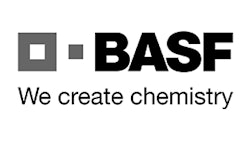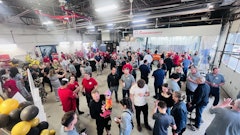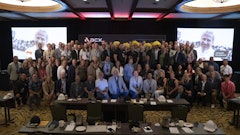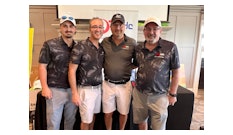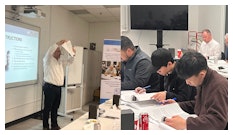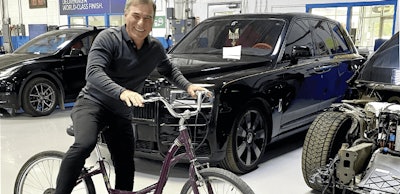
Lorenzo D’Alessandro, director and president of 427 Auto preparing to travel in style.
For the modern shop, good looks are just as important as a good repair
Story by SARAH PERKINS
Beyond the layout of tools and equipment, a building’s design permeates every aspect of a collision repair shop, influencing everything from customer experience to workflow optimization. While the old stereotype of the bodyshop as a dirty, dingy place may still exist in some people’s minds, for today’s shops, good looks are a topic on the same par as a good repair.
Collision Repair magazine recently reached out CSN 427 and CSN Avenue Collision in Ontario and Winnipeg’s Donvito Automotive Group, Collision and Glass to discuss how the aesthetic of a facility is more than just a coat of paint or a well-placed tool rack—it can be the driving force behind a shop’s efficiency, profitability and long-term viability.
Read below to find out how strategic planning and innovative design elements are driving the industry forward, one meticulously crafted space at a time.

For Jessica D’Alessandro, Head of Marketing and PR for CSN 427 and CSN Avenue Collision, from the moment a customer walks into your shop, they are evaluating your brand. As a result, the teams at CSN 427 and CSN Avenue Collision work hard on and take pride in the consistent maintenance of both the interior and exterior of both buildings.
When asked about intentional design aesthetics, D’Alessandro noted that the goal of both shops is for CSN 427—located at 395 Evans Ave, Etobicoke, Ontario—and CSN Avenue Collision— located at 293 Macpherson Ave, Toronto, Ontario—to be as user-friendly as possible—both for employees and customers.
When thinking about interior layouts, D’Alessandro acknowledged that she frequently takes inspiration from coffee shops, lounges and cafes, and aims to create a modern look with a balance between providing both communal and private spaces. As a result, the shops feature areas for customers to sit and do work or relax as well as individual pods for customer service reps to step away as needed.
The use of glass also helps the shops to create an open and transparent atmosphere, which D’Alessandro says can help build trust with customers, and is something she would like to include more of in both shops. For instance, the CSN 427 location features a large window so that customers can see into the back as cars are being repaired, showing them that CSN 427 trusts them to be a part of and engaged in the repair process.
For D’Alessandro, part of building a design rooted in openness and trust is in making the reception area a central point of design— something CSN Avenue Collision accomplishes by having the front desk be the first thing a customer sees when entering the building.
“It’s important to create a focal point for customers so that they feel welcomed into the space and know where to go for information,” D’Alessandro told Collision Repair magazine. “Another key part of this is in having good signage to help direct the flow of customers in the space.”
Still, in working to achieve areas of comfort, community, functionality and modern aesthetics, it’s also important to have room for fun and CSN 427 achieves this in part by providing bikes for employees to use to get around the 90,000 square footage shop. In turn, D’Alessandro’s father, Lorenzo D’Alessandro can occasionally be seen traveling in style on an electric scooter sporting the CSN logo.
With these conscious design features in place, D’Alessandro spoke about how customers have responded positively to the decisions, complementing both shops on how comfortable, clean, and put together they are.
“Putting money into the look of a shop can be a last priority,” D’Alessandro said, “but it’s something that should be at the forefront. It benefits customers and staff, and it sends a message to potential employees. Having a clean, well-designed place to work gives employees a place to take pride in and want to return to.”






Similarly, for Rick De Dominicis, vice president of operations of Donvito Automotive Group, the design of a shop is all about creating a luxury experience for customers while also standing out from the competition. When discussing specific design choices of Donvito Automotive Group’s collision and auto glass repair shop location—found at 1700 Sargent Ave. in Winnipeg—De Dominicis noted that the shop is certified in several luxury automotive brands, like BMW, Mini Cooper, and Tesla, and so the initial design goal was to “create a luxury look to match the luxury vehicles.”
While the longtime stereotype of the collision repair shop was a dingy place, De Dominicis hoped to buck the trend, and when the Winnipeg location was built in 2013, he hoped to make a positive lasting impression with its design.
“When we first built in 2013, we would hear comments everyday about how cool it was, with people wanting to know what we did there. Now, I hear comments less often, but we succeeded in leaving an impact and lots of people I talk to know exactly where our building is. I definitely think that the unique exterior design helped contribute to this. We’ve become a sort of landmark location.”
From here, De Dominicis has worked on ensuring that all of the Donvito Automotive Group’s collision and auto glass repair shop locations have transitioned to offering the feeling of luxury. This includes equipping each location with a customer lounge section and staying up to date on customer trends and needs.
Donvito Automotive Group, Collision and Glass also worked closely with BASF to ensure that the inside of the shop was built with a functional flow so that employees could easily navigate the space and have set workstations to improve output.
Moreover, when considering a shop’s design, De Dominicis further stressed the importance of learning from the automotive community. For Donvito Automotive Group’s collision and auto glass Winnipeg location in particular, De Dominicis told Collision Repair magazine how vendor partners and others in the industry have come to visit the shop to get ideas about design and to learn from the shop’s layout.
“More than just the design of a shop, it’s important to always be adapting to your customers,” De Dominicis said. “Visually, the shop is about making a difference, but it’s also important to make sure that your customer service matches the look and feel of the building.”
To help communicate this sense of professionalism, De Dominicis discussed how the front of house staff maintain business casual attire, and the shop itself includes charging stations to ensure it is able to offer up-to-date customer service when it comes to the latest tech trends.
When asked about dream design details, De Dominicis explained how it would be nice to have more space to continue expanding future customer service resources.
“If I could add anything to the shop,” De Dominicis said, “I would love to be able to have more space for a supercharging station. Part of maintaining a shop’s design is in keeping up with customer needs and with the increase in electric vehicles, it would be nice to be able to have more charging spaces.” As such, while there are many approaches when it comes to a shop’s design, D’Alessandro and De Dominicis help demonstrate how the significance of design in a collision repair shop cannot be overstated.
By prioritizing elements such as layout, workflow optimization and customer interaction zones, a well-designed shop can not only attract more clients, but also contribute to their satisfaction and loyalty. A carefully crafted environment also fosters employee morale and productivity.
Ultimately, investing in design is not just about creating a visually appealing space. It’s about creating a functional and thriving ecosystem that sets a collision repair shop apart in an increasingly competitive industry.




